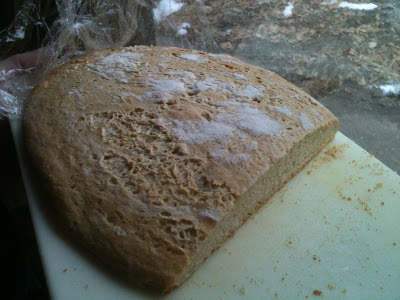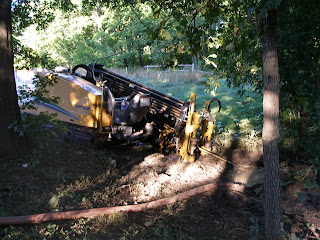Drip Irrigation, Fertigation and the Mineralization of Soils
 |
| Photo by Christian Thill, Univ. of Minnesota |
Questions: Direct watering of plants under soil or from emitters above concentrate the moisture and reduce water use. What are the consequences of limiting the broad precipitation on soils and on resulting root growth and plant health?
Foliar Rinse
The benefit of rain and sprinklers is the cleaning of the plant itself with the removal of grit, dust and pollutants. This also raises the humidity around the plant. A benefit for woody plants, but managed for annual plants relative to fungal and bacterial disease.
Soil Mineralization.
Assuming the correct water based fertigation is followed, over time soil salinity rises to harmful levels stressing and killing plants. When evaporation exceeeds precipitation minerals and salts collect at the soil surface. The increased salts require plants to use more energy to extract water from the soil. Evaporation exceeds precipitation causing the salts to collect close to the surface rather than leaching into the soil. In many cases the soil must be flushed at a rate of ten inches of water per 12 inches of soil. This will flush out approximately 70% of the salts. [i] Balancing the use of drip irrigation with periodic “rain fall” mitigates the mineralization effect and leeches the minerals through the soil. This can be done mechanically or with mobilizing hoop houses to expose the soil to rain and snow. In Arid climates where the rainfall is insufficient, sprinklers are needed to rinse the soil while watering crops; in combination with drain tile in some cases. Some growers remove the mineralized soil and replace it with fresh soil.
Root Growth
Early use of drip irrigation called for one emitter per plants. This has changed some as root development was stunted to the spatially limited available water in the soil. Multiple emitters are required to help the plant expand its root systems and available nutrients throughout the planting bed.[ii]
Root Distribution
The distance of an emitter from the stem or trunk of a woody plant also affects the size and distance the roots extend. [iii] This affects plant stability and its ability to withstand wind, erosion, and rain. Nutrient contact is also limited with dry soils in proximity to the plant and fewer roots to intercept and absorb nutrients.
[i] Upton, S, Use 2005, These Tips to Manage Hoop House Soil Salinity, The Samuel Roberts Noble Foundation, Ardmore, Okla.
[ii] Kourik, Robert, 2010, TerraInforma
[iii] Nazzi, Abdullah, Jahaj, and Ghulam, The Effects of Drip Irrigation on Root System of Date Palm. King Faisal University, Saudi Arabia Second Symposium on Date Palm


Comments